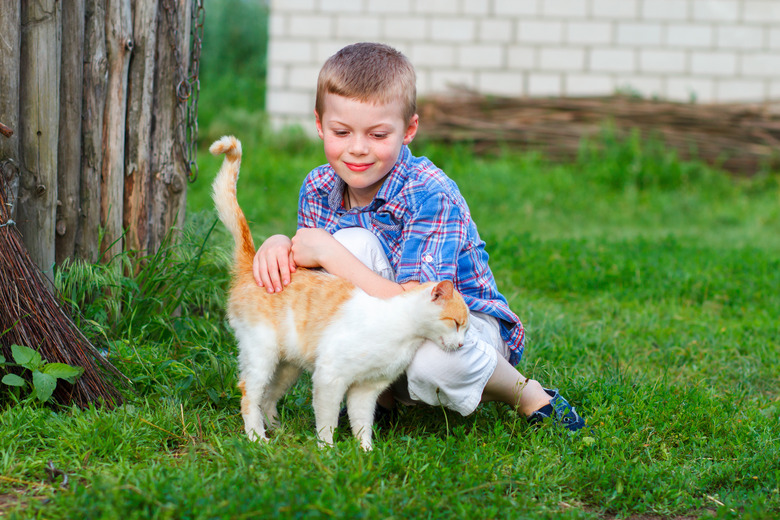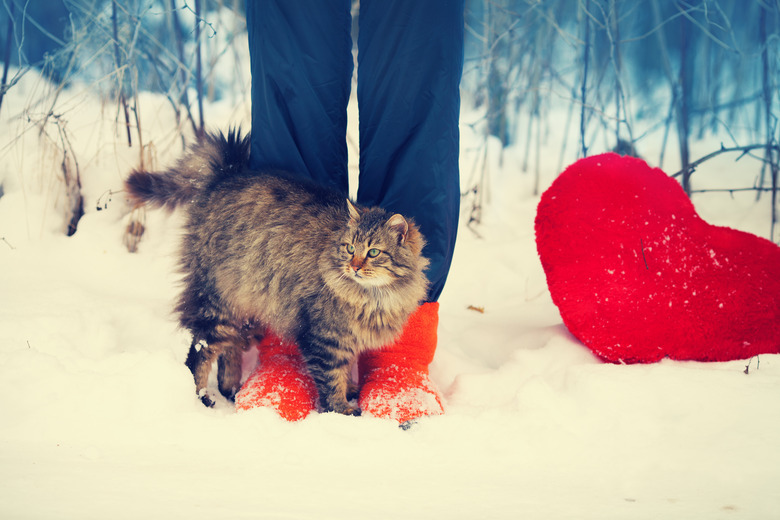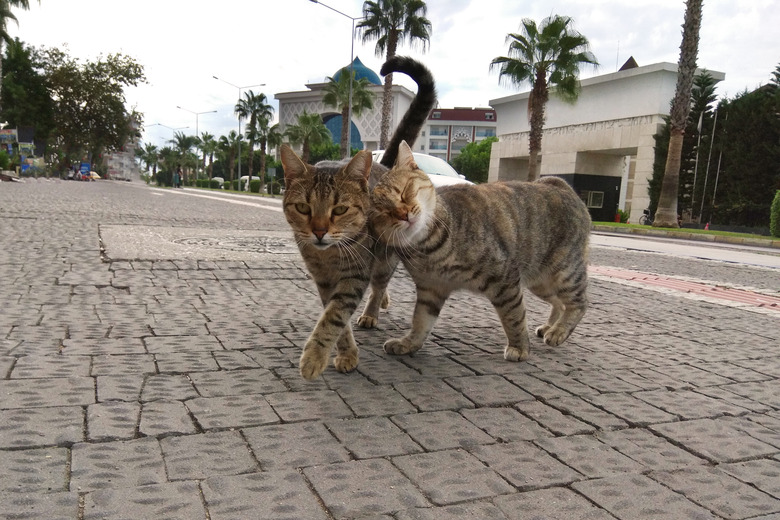Why Do Cats Like Being Pet Above Their Tail?
If you've been afforded the pleasure of sharing your life with a cat, you likely know all of her favorite spots to be petted. Some prefer a gentle scratch under the chin, while others like a good rub at the base of the ears, and some may even allow you to rub a furry belly from time to time. One area, in particular, seems to be enjoyed by nearly all cats, although most people probably aren't sure why — the tail. More specifically, the base of the tail. It may seem like an odd spot to receive affection to some, but cats like it for a very specific reason.
Cats and affection
Cats and affection
Before we can understand where cats like being pet, it's helpful to realize why cats like being pet, and what it means to them. Many people assume that cats have aloof or antisocial personalities, which is not actually true. American Veterinarian explains that socialization among cats starts at around three weeks with other members of their litter and that proper socialization with other cats can result in a more social or affectionate cat among people. Some cat breeds are known for being especially affectionate, including Ragdolls, Burmese, and American Curls, according to Cat Fanciers Association. Part of this early socialization also includes a process known as localization, which helps cats attach to their environment. Localization explains a lot about why cats enjoy being petted on certain areas, which includes the tail.
Why their tails?
Why their tails?
You may have noticed your cat rubbing his face or the side of his body against certain things around your home, like a chair, certain doorways, or even your own legs. It may look like he's trying to scratch an itch, but what he's actually doing is distributing his scent as a way to mark his territory, and familiarize himself with his surroundings. The Cummings School of Veterinary Medicine at Tufts University explains that this behavior is known as bunting, and notes that cats do this with inanimate objects, people, and other cats.
Why those particular body parts? Pheromones! Cats have pheromone glands on various parts of their bodies, including the chin, cheeks, forehead, and you guessed it — the tail. Petting a cat in any or all of these areas usually results in a very happy cat, which is why many cats will lean even further into being petted, arching their back and pushing their butt up into the air so you can be sure to get a good scratch right at the base of the tail. When you pet your cat around this area, what you're actually doing is releasing pheromones and covering you in your cat's scent.
The importance of scent
The importance of scent
Unlike people, cats rely on their sense of smell to give and receive information and navigate the world around them. Whether feral and living in outdoor colonies or domesticated and residing in the comfort of a human home, cats maintain familial bonds by establishing territories via scent. If a cat is looking to warn other felines to stay away from their home, yard, colony, or porch, they may mark their area by urinating or rubbing parts of their bodies on surfaces.
Cats who share space, however, will cover each other in their own smells so that they are recognizable to one another. They will sometimes do this through grooming, but most often transfer scent by rubbing their faces, ears, or their tails against each other — all places where their scent pheromones are found. According to The Humane Society, this behavior helps establish and reinforce bonding among cats, which is obviously enjoyable and can help create a sense of safety among them.


